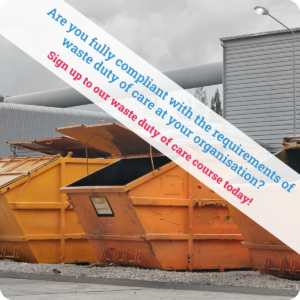Air pollution
Air pollution harms human health and the environment. Common air pollutants include nitrogen dioxide, particulate matter and sulphur dioxide. These pollutants are principally the product of combustion from power generation, space heating or from motor vehicle traffic.
According to recent research, an estimated 50,000 Britons die prematurely each year from disease caused by air pollutants, with an economic cost of £24 billion per year. Air pollution can cause both short-term and long-term health effects. People exposed to high enough levels of certain air pollutants may experience irritation of the eyes, nose and throat, breathing difficulties and the worsening of existing lung and heart problems. Some groups are more at risk of the effects of air pollution, including adults and children with lung or heart conditions and older people.
Along with harming human health, air pollution can cause a variety of environmental effects. Air pollution causes damage to plants and animals, affecting biodiversity and crop yields.
Legislation
Action to manage and improve air quality is largely driven by EU legislation. The Ambient Air Quality Directive sets legally binding limits for the concentration of major air pollutants (in outdoor air) that impact public health, including particulate matter and nitrogen dioxide. As well as having direct effects, these pollutants can combine in the atmosphere to form ozone which is a harmful air pollutant and a greenhouse gas.
The Ambient Air Quality Directive is implemented in the UK through the Air Quality Standards Regulations. The Regulations establish limit values and, where appropriate, alert thresholds for concentrations of certain pollutants in ambient air (basically the natural state of air in the outdoor environment). These are applied in zones across the country in order to avoid, prevent or reduce their harmful effects on human health and the environment.
The Department for Environment Food and Rural Affairs (DEFRA) carries out an annual national assessment of air quality using modelling and monitoring to determine compliance with EU Limit Values.
Local authorities are required to review and assess air quality in their area under the local air quality management regime. These reviews identify whether national objectives have been, or will be achieved at relevant locations, by an applicable date. If national objectives are not met, or are at risk of not being met, the local authority must declare an air quality management area and prepare an air quality action plan. The plan will identify measures that will be introduced to meet the objectives.
Under the Environment Act 1995, the UK Government and the devolved administrations for Scotland and Wales are required to produce a national air quality strategy containing standards, objectives and measures for improving ambient air quality.
The UK is failing to meet EU air pollution targets and is currently under threat of legal action from the EU. Other member states, such as Spain, Germany and France, are also failing to meet their targets.
UK-AIR
DEFRA provide air quality information online via its UK-AIR website, at https://uk-air.defra.gov.uk/. UK-AIR provides forecasts to give advance warning of the expected levels of air pollution for the UK. It also provides summaries of air pollution levels by region and provides information on how air quality is monitored.
The forecasts, latest data and summaries on UK-AIR use the Daily Air Quality Index. The Index covers five pollutants, ozone, nitrogen dioxide, sulphur dioxide, particulate matter and fine particulate matter. The Index uses a scale of 1’10 which is divided into four bands:
- Low (1-3)
- Moderate (4-6)
- High (7-9)
- Very high (10)
Each band is accompanied by a health message for at-risk individuals, such as those with lung or heart problems, and an accompanying health message for the general population. For more information on the Index click here.
Wales, Scotland and Northern have their own dedicated air quality websites:
- Air Quality in Wales – http://www.welshairquality.co.uk
- Air Quality in Scotland – http://www.scottishairquality.co.uk
- Northern Ireland Air – http://www.airqualityni.co.uk/
Improving air quality
Local councils can introduce extra controls on emissions if there are air quality problems in their area. This could include the introduction of road charges, parking restrictions and increased restrictions on waiting and loading times. It may also include prioritising walking and cycling networks in cities and encouraging the use of cleaner vehicles such as hybrid or electric vehicles. These measures aim to reduce congestion and improve air quality.
An example of action taken to address air quality problems is the London Low Emission Zone, a traffic pollution charging scheme with the aim of reducing emissions from polluting heavy diesel vehicles. Vehicles that do not conform to higher emission standards are charged and other vehicles may enter free of charge.
Other measures that can be taken include reducing smokestack emissions and increasing the use of renewable powers sources, such as solar and wind. These measures aim to reduce emissions from power generation and improve air quality.
It is also important that the potential air quality impacts of new developments are taken into account in planning. Concerns could arise if the development is likely to generate poor air quality in an area or the development is likely to adversely impact upon the implementation of air quality strategies/action plans. If the development is likely to cause problems mitigation options will have to be considered and will depend on the proposed development and the location. This may include using green infrastructure, controlling dust and emission from construction, operation and demolition, and contributing funding for measures that improve air quality.
